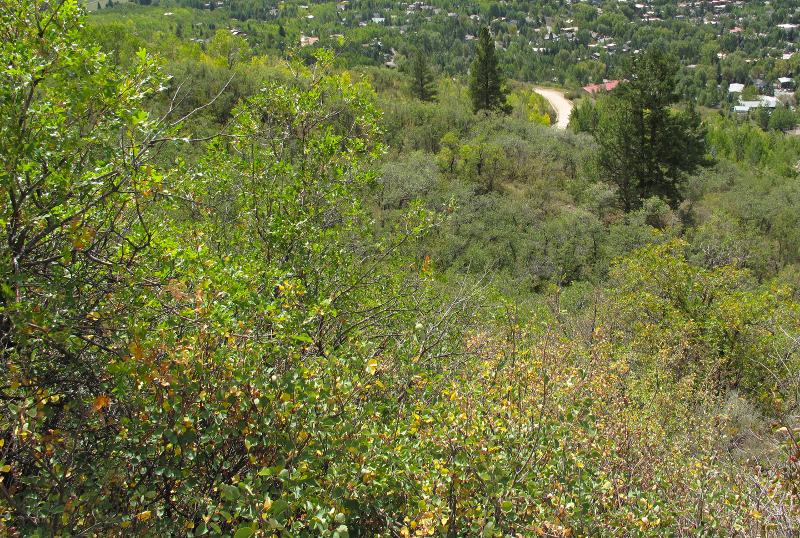 “Mami, are we there yet?”
“Mami, are we there yet?”
Right. If you’re a parent you know exactly what that means.
And no, we are NOT on a road trip. “Mami, really, we must be there soon, right?” Luka, my
4-year old son echoes the earlier statement from Zala, my 6-year old daughter. We are about two and a half hours into our backpacking trip.
It’s been raining on and off, luckily just a drizzle for now, though ominous
looking clouds lurk too close for comfort. It’s the last weekend before school starts and we haven’t
backpacked yet this summer. So, sunny or not, we’re going for it.
Summertime in the Rockies is simply magical, and we love all
things outdoors – be it car camping, short exploratory hikes, biking, floating
down the river, or backpacking. The latter takes a bit more preparation
and a LOT more patience. Backpacking with kids is a whole new adventure no
matter the level of experience in your previous life (remember, that life before
kids?). We attempted our first backpacking trip as soon as our kids were big enough to walk with a backpack
for about half an hour. Knowing our
limitations of low mileage and low carrying capacity made this a fun
challenge. But little people mean little impact, so off the trail we went and
found wilderness experiences about half a mile away from the car, perfect. Filtering
water, finding firewood, looking at stars and waking up to greenness around us was
magical. The kids were hooked! Or so I chose to see it...
“MA-MIIII!!” Right, time for a snack. Time for yet another break, just short
enough to put something in their mouths as I frantically try to change the flow of
energy from exhausted to excited: “Wow, look at these ants carrying a big leaf" and, "oh, this flower has such an interesting pattern. Do you think you can count
the petals? Oh, see how the shadows make this tree look so giant? Wow, this
rock looks like an egg…” Constant mouth diarrhea as I try to distract, change focus, pack
up and get going before they realize they’re walking again. We make up funny
stories, rattle off nature facts, do math, talk, listen, be quiet and just keep
walking. Then somehow, like a miracle, there we are. Just at the
right time. We find an awesome spot, this time in real wilderness, quite a few miles away
from the sounds, lights, and busy-ness of everyday life. Kids get it; they play,
explore, and run around as if the last four hours didn’t happen. Crazy.
The tent goes up and soon we’re cozy and exhausted in our sleeping bags.
“Mami, can we hike some more tomorrow?” My heart sings as I hear that. But as Zala
and Luka drift off in their sleep I can’t help but think that the reality of
hiking tomorrow will again be the schizophrenic pattern of happiness and
overload, just like today. Walk and bask in the excitement of Zala’s voice as she
watches the little butterfly land on a flower just so. Walk and listen to Luka’s
whiny voice telling you how he REALLY can’t go any further. Walk, laugh, distract,
try to be patient as they ask “Are we there yet?” for the fiftieth time. Walk
and keep walking. Because magic happens at every step and I wouldn't have it any other way.
 Happy Halloween from Aspen Center for Environmental Studies! On the evening of Monday,
October 22nd, ACES hosted 'Creepy Crawly Night' for all Aspen
Elementary School second grade students and their families. The Hallam Lake Nature Center was
decked out in spooky decorations, spider webs, and information and crafts
involving our favorite creepy crawly Aspen animals, like spiders and bats. Some
of our resident indoor animals made a special appearance, such as the ball python,
the Eastern box turtle, and the Western tiger salamander. Many 'creepy' animals ended up
painted on second grader cheeks and across their noses!
Happy Halloween from Aspen Center for Environmental Studies! On the evening of Monday,
October 22nd, ACES hosted 'Creepy Crawly Night' for all Aspen
Elementary School second grade students and their families. The Hallam Lake Nature Center was
decked out in spooky decorations, spider webs, and information and crafts
involving our favorite creepy crawly Aspen animals, like spiders and bats. Some
of our resident indoor animals made a special appearance, such as the ball python,
the Eastern box turtle, and the Western tiger salamander. Many 'creepy' animals ended up
painted on second grader cheeks and across their noses!



